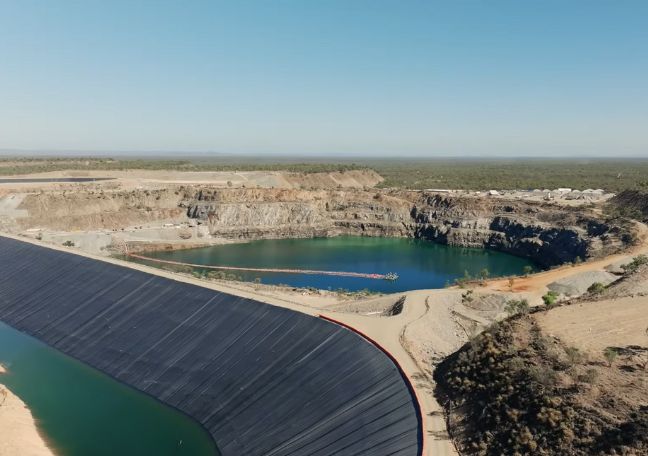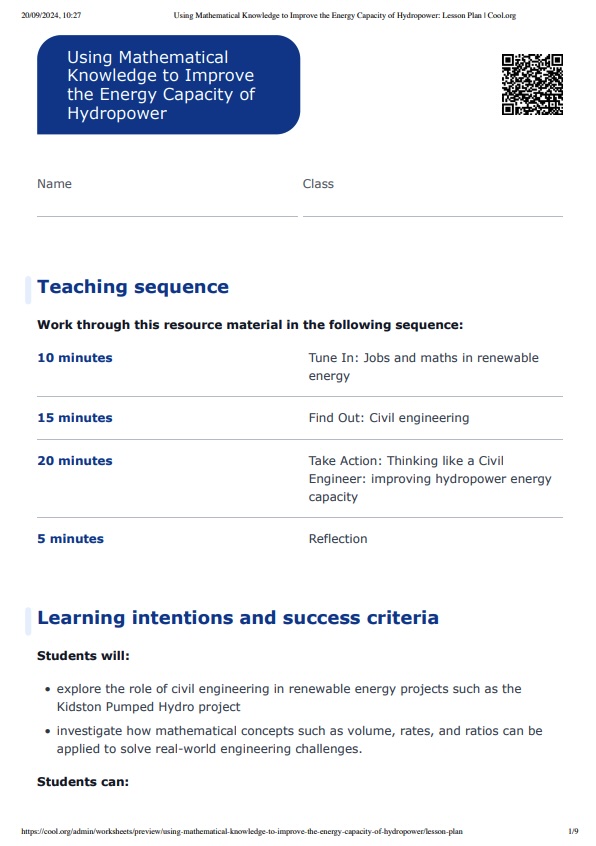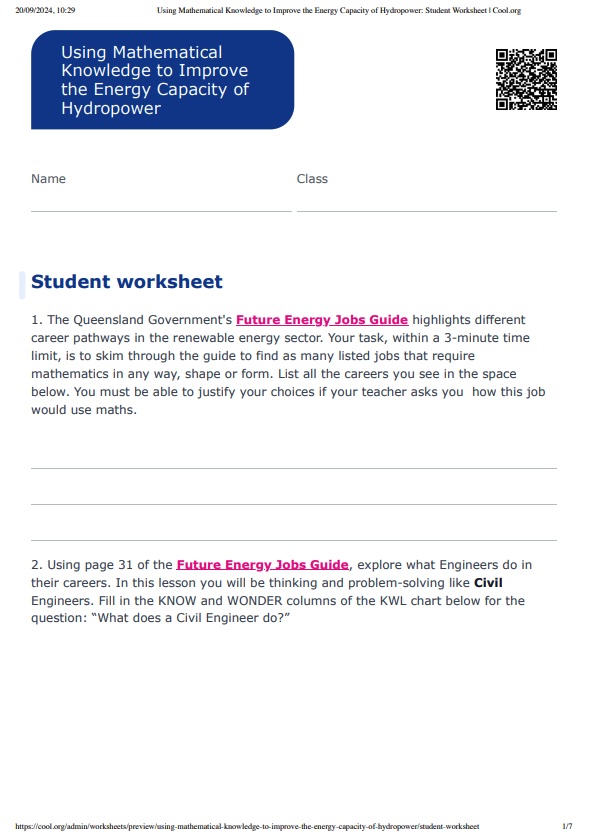Lesson summary
Students will solve practical problems by calculating the volume of cylinders and applying rates and ratios to optimise the energy capacity of the Kidston pumped hydro renewable energy project. They will use mathematical modelling to evaluate real-world engineering challenges in renewable energy.
Learning intentions:
Students will...
- explore the role of civil engineering in renewable energy projects such as the Kidston Pumped Hydro project
- investigate how mathematical concepts such as volume, rates, and ratios can be applied to solve real-world engineering challenges.
Success criteria:
Students can...
- calculate quantities that are directly proportional to another
- calculate the volume of a cylinder
- apply mathematical reasoning to a real-world context and present a mathematical justification for how increasing water usage in the Kidston pumped hydro project can improve energy output, using real-world data from the project.
Lesson guides and printables
Curriculum links
Select your curriculum from the options below.
Lesson details
Skills
This lesson is designed to build students’ competencies in the following skills:
- creative thinking
- critical thinking
- collaboration
- communication
- problem-solving
Curriculum Mapping
Australian Curriculum (v9.0) content description: Year 9 Mathematics
Students learn to:
- solve problems involving the volume and surface area of right prisms and cylinders using appropriate units (AC9M9M01)
- use mathematical modelling to solve practical problems involving direct proportion, rates, ratio and scale, including financial contexts; formulate the problems and interpret solutions in terms of the situation; evaluate the model and report methods and findings (AC9M9M05).
Relevant parts of Year 9 achievement standards: Students apply formulas to solve problems involving the surface area and volume of right prisms and cylinders. They use mathematical modelling to solve practical problems involving direct proportion, ratio and scale, evaluating the model and communicating their methods and findings.
NSW Syllabus outcomes:
- applies knowledge of volume and capacity to solve problems involving right prisms and cylinders (MA4-VOL-C-01)
- solves problems involving ratios and rates, and analyses distance–time graphs (MA4-RAT-C-01)
General capabilities: Critical and Creative Thinking, Numeracy
Cross-curriculum priority: Sustainability
Level of teacher scaffolding: Medium: facilitate class discussion.
UN Sustainable Development Goals
UN SDG 7: Ensure access to affordable, reliable, sustainable and modern energy for all.
- Target 7.2: By 2030, increase substantially the share of renewable energy in the global energy mix.
Resources Required
- Device capable of displaying audiovisual material
- Student devices for individual research
- Student Worksheet
Additional Info
This lesson has been developed in partnership with the Queensland Government through Queensland's Clean Energy Workforce Roadmap. Cool.org would like to acknowledge and express our gratitude to the Clean Energy Council for the expertise and advice provided in creating these resources.
Related Professional Learning
STEM Professional Learning Pathway
Quick summary: Enhance your practice with Cool.org's STEM Professional Learning Pathway. This year-long plan is designed to build your skills and capabilities in teaching STEM, ultimately transforming you into a STEM Innovator. The pathway will prepare you to integrate STEM education effectively, adapt to technological advancements and inspire students to succeed in a rapidly evolving world.




Welcome back!
Don't have an account yet?
Log in with:
Create your free Cool.org account.
Many of our resources are free, with an option to upgrade to Cool+ for premium content.
Already have an account?
Sign up with:
By signing up you accept Cool.org's Terms and Conditions(Opens in new tab) and Privacy Policy(Opens in new tab).